The Use of Support Vector Machine to Classify Potential Customers for the Wealth Management of a Bank †
Abstract
1. Introduction
2. Experiment Method
2.1. Analysis
2.2. Algorithm
- If n > m, either of the two is used.
- If n < m, SVM is used.
3. Implementation and Results
- Filter Method
- 2.
- Wrapper Method
- 3.
- Embedded Method
3.1. Implementation
- Basic customer information: In addition to age, gender, education, and occupation category, the customer needs to be qualified to invest in specific high-risk products and receive a “professional investor flag”. This indicates whether the customer has a higher tolerance and participates in the bank’s issuance of funds. Products with high investment returns contribute to the performance of banks’ wealth management services. In addition, a “life cycle segmentation” method customized by Bank C is also added.
- Customer asset account: 9 fields are determined, including the total average asset balance, the foreign currency saving deposit balance, Taiwanese dollar deposits, foreign currency deposits, mutual fund assets under management, insurance, and structured notes. Based on the balance of each field, we identify customer investment behavior and preference characteristics. Factors such as the number of products held and whether someone is a check deposit holder are added to prove the customer’s enthusiasm for investment and their risk-taking awareness.
- Customer management of bank transactions: The “bank-period-years” are used to determine the degree of customers’ loyalty to the bank or represent customer stickiness. The “relationship manager’s code” is also added as the experience level of the specialist who provides the service. The “customer’s major district code” is used to determine the difference to marketing approaches from different geographic area.
3.2. Results
4. Conclusions
Author Contributions
Funding
Institutional Review Board Statement
Informed Consent Statement
Data Availability Statement
Acknowledgments
Conflicts of Interest
Appendix A
| Field Type | Field Name | Data Scope |
|---|---|---|
| Prediction (the answer) | C1, potential customer | No (0), yes (1) |
| Basic customer information | C2, age | 20 to 70 |
| C3, gender | Male (1), female (2), enterprise (0) | |
| C4, education | 1. Ph.D. 2. Master. 3. Bachelor. 4. Associate bachelor. 5. High school. 6. Others. | |
| C5, professional investor flag | No (0), yes (1) | |
| C6, occupation | 1. Unstable. 2. Public agencies. 3. Teaching position/business. 4. Housekeeping. 5. Financial industry. 6. Others | |
| C7, life cycle segmentation | 1. Top rich class. 2. Rich second generation. 3. Middle class. 4. Young. 5. Salary class. 6. Asset appreciation. 7. Retired. | |
| Customer asset account | C8, total average asset balance | 3 to 615 million |
| C9, number of products held | 0 to 8 | |
| C10, check deposit holder | No (0), yes (1) | |
| C11, Taiwan foreign currency saving deposit balance | 0~220 million | |
| C12, Taiwanese dollar saving deposit balance | 0~337 million | |
| C13, Taiwanese dollar time deposit balance | 0~208 million | |
| C14, foreign currency saving deposit balance | 0~169 million | |
| C15, foreign currency time deposit balance | 0~350 million | |
| C16, mutual fund net assets under management | 0~569 million | |
| C17, insurance balance | 0~647 million | |
| C18, structural notes balance | 0~584 million | |
| Customer management of bank transactions | C19, bank-period-years | 0~104 years |
| C20, relationship manager’s code | 1. Financial relationshipmanagement SRM1 2. Financial relationshipmanagement SRM2 3. Financial relationshipmanagement RM1 4. Financial relationshipmanagement RM2 5. PFB 6. YS 7. Comprehensive relationship management SRM 8. Comprehensive relationship management RM 9. Private banking RM | |
| C21, customer’s major district code | 1. North District 1 2. North District 2 3. North District 3 4. North District 4 5. Tao-zhu District 6. Middle District 1 7. Middle District 2 8. South District |
References
- Amnur, H. Customer Relationship Management and Machine Learning Technology for Identifying the Customer. JOIV Int. J. Inform. Vis. 2017, 1, 12–15. [Google Scholar] [CrossRef]
- Ledro, C.; Nosella, A.; Pozza, I.D. Integration of AI in CRM: Challenges and guidelines. J. Open Innov. Technol. Mark. Complex. 2023, 9, 100151. [Google Scholar] [CrossRef]
- Houdhury, A.M.; Nur, K. A Machine Learning Approach to Identify Potential Customer Based on Purchase Behavior. In Proceedings of the International Conference on Robotics, Electrical and Signal Processing Techniques (ICREST), Dhaka, Bangladesh, 10–12 January 2019. [Google Scholar]
- Velu, A. Machine Learning Techniques for Customer Relationship Management. Int. J. Creat. Res. Thoughts (IJCRT) 2021, 9, 753–763. [Google Scholar]
- Ledro, C.; Nosella, A.; Vinelli, A. Artificial intelligence in customer relationship management: Literature review and future research directions. J. Bus. Ind. Mark. 2022, 37, 48–63. [Google Scholar] [CrossRef]
- Hsieh, J.-W.; Lai, C.-H.; Hwang, Y.-S. Application of Artificial Intelligence Technology in Bank Wealth Management Customer Operation Analysis-Utilizing Support Vector Machine to Predict and Classify Potential Customers. Master’s Thesis, Executive Master of Business Administration (EMBA). National Taipei University of Technology (NTUT), Taipei, Taiwan, 19 January 2024. [Google Scholar]
- Pal, S.K.; Mitra, S. Multilayer perceptron, fuzzy sets, classification. IEEE Trans. Neural Netw. 1992, 3, 683–697. [Google Scholar] [CrossRef] [PubMed]
- Esmaily, H.; Tayefi, M.; Doosti, H.; Ghayour-Mobarhan, M.; Nezami, H.; Amirabadizadeh, A. A Comparison between Decision Tree and Random Forest in Determining the Risk Factors Associated with Type 2 Diabetes. J. Res. Health Sci. 2018, 18, 412. [Google Scholar]
- Zou, X.; Hu, Y.; Tian, Z.; Shen, K. Logistic Regression Model Optimization and Case Analysis. In Proceedings of the IEEE 7th International Conference on Computer Science and Network Technology, Dalian, China, 19–20 October 2019. [Google Scholar]
- MHearst, M.A.; Dumais, S.T.; Osuna, E.; Platt, J.; Scholkopf, B. Support vector machines. IEEE Intell. Syst. Their Appl. 1998, 13, 18–28. [Google Scholar] [CrossRef]
- Zhang, R.; Nie, F.; Li, X.; Wei, X. Feature selection with multi-view data: A survey. Inf. Fusion 2019, 50, 158–167. [Google Scholar] [CrossRef]
- Chandrashekar, G.; Sahin, F. A survey on feature selection methods. Comput. Electr. Eng. 2014, 40, 16–28. [Google Scholar] [CrossRef]
- Guyon, I.; Elisseeff, A. An introduction to variable and feature selection. J. Mach. Learn. Res. (JMLR) 2003, 3, 1157–1182. [Google Scholar]
- Salesi, S.; Cosma, G.; Mavrovouniotis, M. TAGA: Tabu Asexual Genetic Algorithm embedded in a filter/filter feature selection approach for high-dimensional data. Inf. Sci. 2021, 565, 105–127. [Google Scholar] [CrossRef]
- Moutinho, L. Strategic management in tourism. In Segmentation, Targeting, Positioning and Strategic Marketing; Moutinho, L., Ed.; CABI: Wallingford, UK, 2000; pp. 121–166. [Google Scholar]


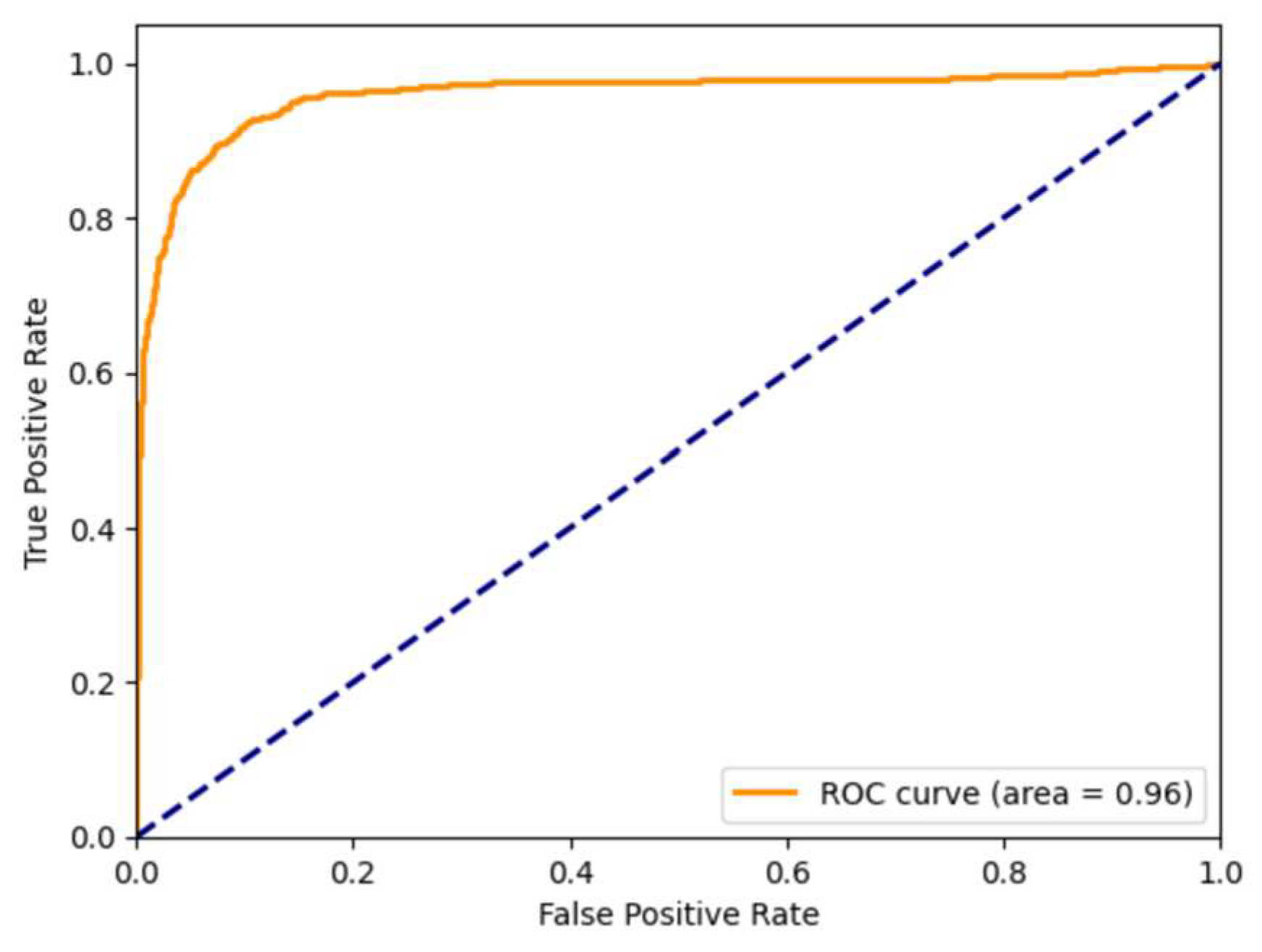

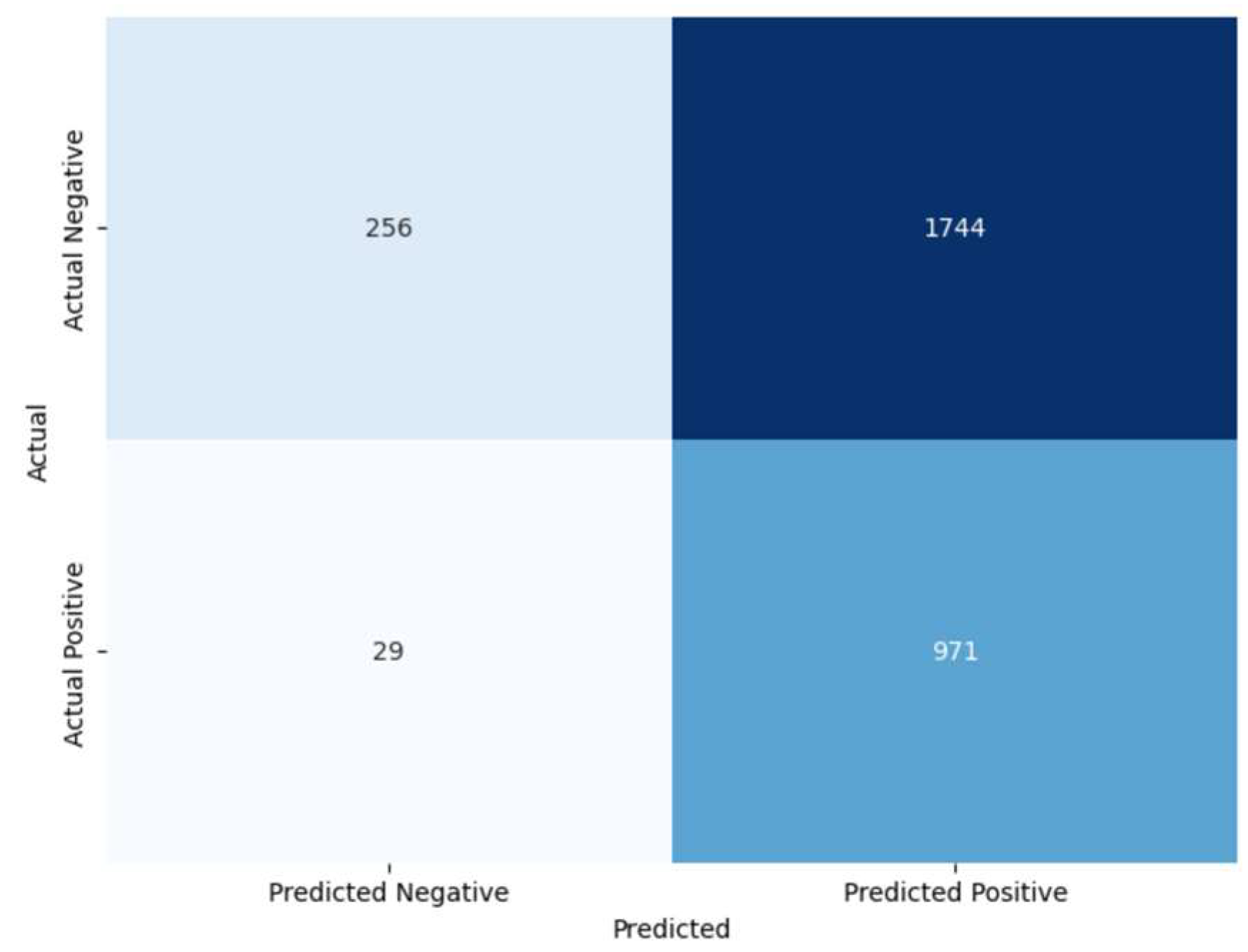
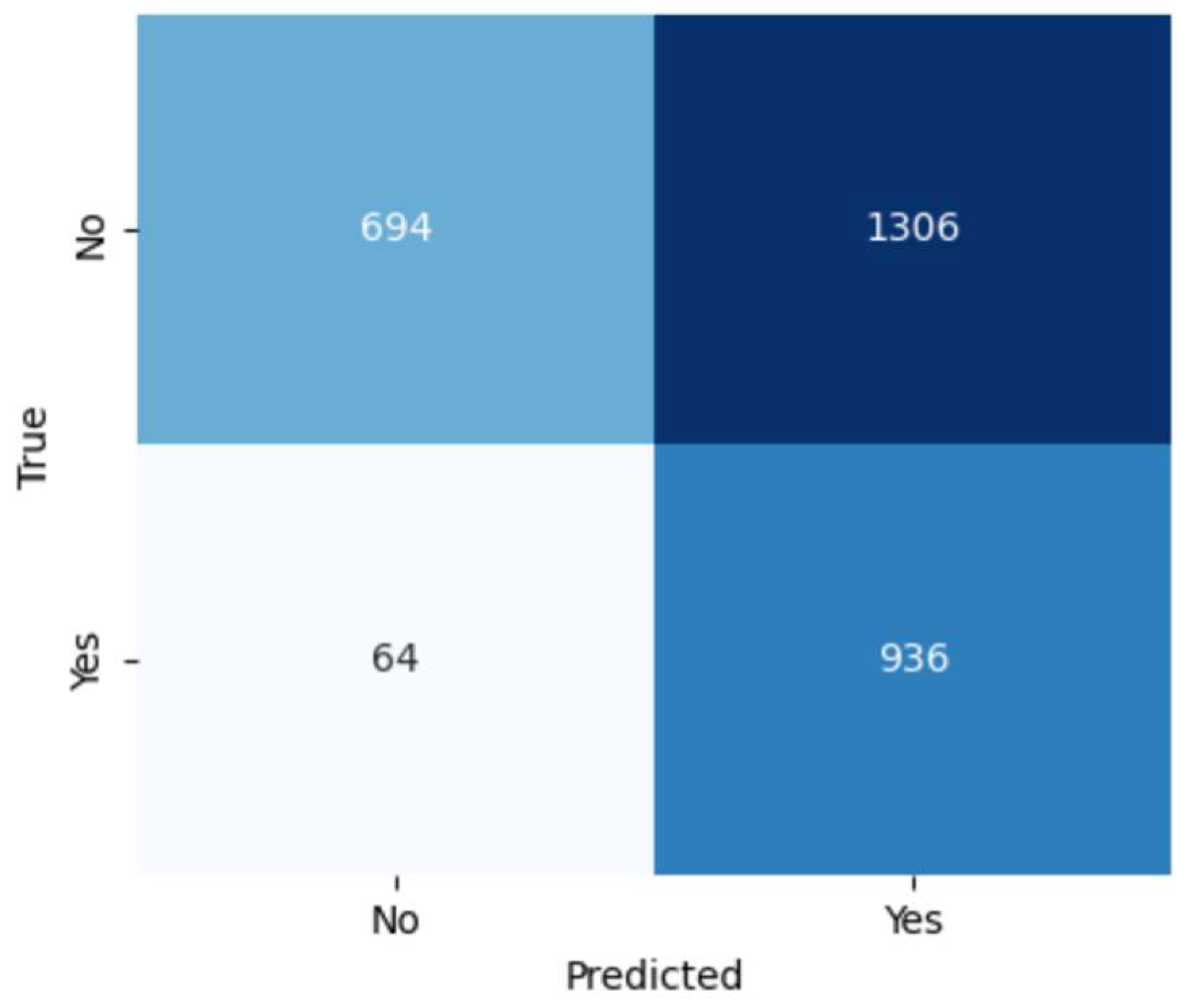
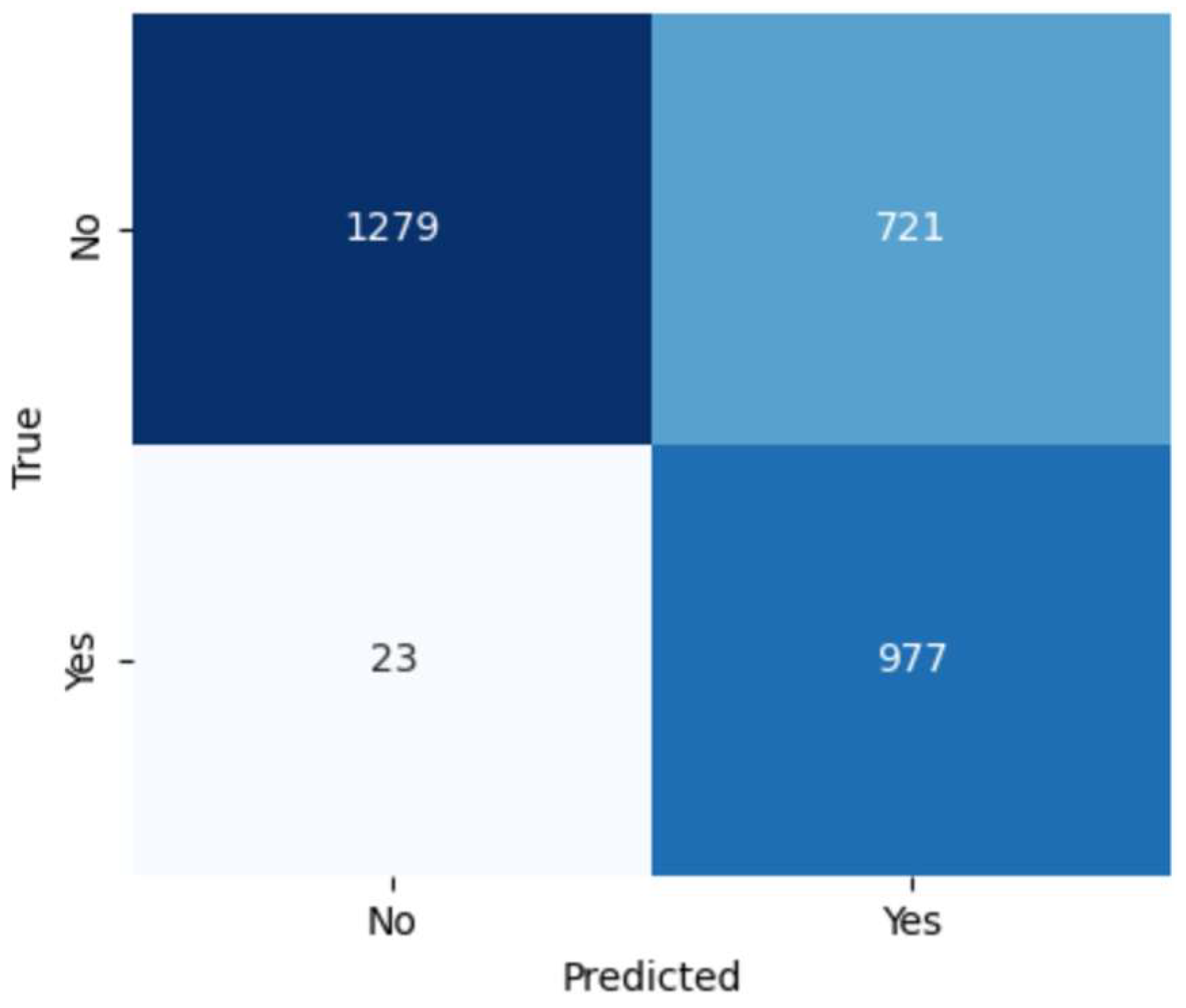
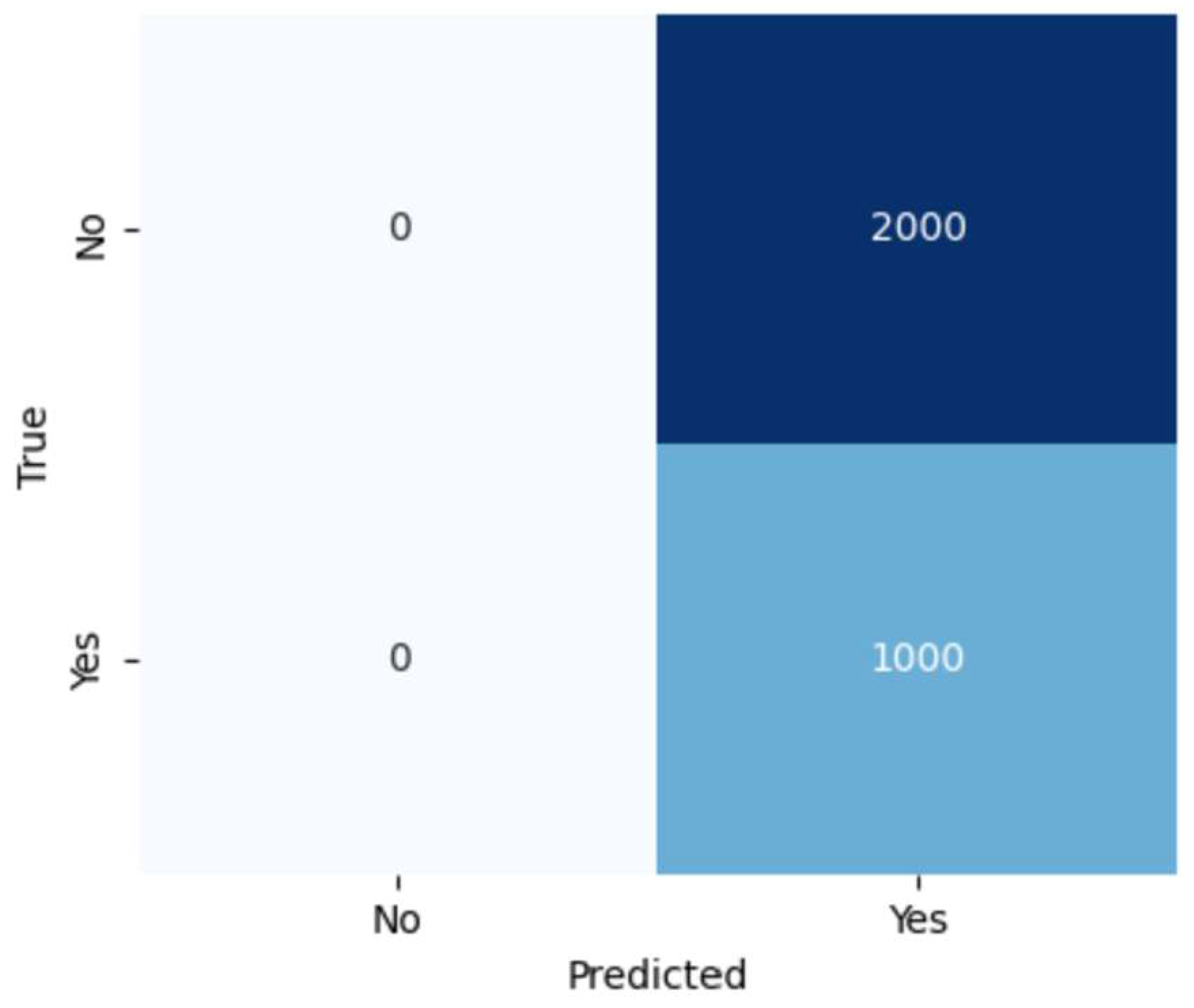
| Algorithm | Accuracy | Recall | Precision |
|---|---|---|---|
| Logistic regression | 98.49 | 99.56 | 97 |
| Decision tree classifier | 97.95 | 96.98 | 98.22 |
| Support vector classifier | 97.3 | 97.99 | 95.82 |
| Random forest classifier | 98.14 | 98.49 | 97.2 |
| Multilayer perceptron classifier | 99.41 | 98.93 | 99.68 |
| Method | Chosen Fields | Accuracy | F1 Score |
|---|---|---|---|
| Rule of thumb | C2, C4, C5, C6, C7, C8, C9, C10, C11, C12, C13, C14, C15, C16, C17, C20, C21 | 0.83008 | 0.83 |
| Correlation | C2, C3, C4, C5, C6, C7, C8, C9, C10, C11, C14, C15, C16, C17, C18, C19, C20, C21 | 0.95424 | 0.95 |
| Feature importance | C5, C8, C9, C10, C14, C16, C18 | 0.95296 | 0.95 |
| L1 regularization | C8, C14, C16, C18 | 0.92064 | 0.92 |
| Method | AUC | Precision | Recall | F1 Score |
|---|---|---|---|---|
| Rules of thumb | 0.7 | 0.35764 | 0.971 | 0.52274 |
| Correlation | 0.87 | 0.41748 | 0.936 | 0.57742 |
| Feature importance | 0.96 | 0.57538 | 0.977 | 0.72424 |
| L1 regularization | 0.82 | 0.33333 | 1 | 0.5 |
Disclaimer/Publisher’s Note: The statements, opinions and data contained in all publications are solely those of the individual author(s) and contributor(s) and not of MDPI and/or the editor(s). MDPI and/or the editor(s) disclaim responsibility for any injury to people or property resulting from any ideas, methods, instructions or products referred to in the content. |
© 2025 by the authors. Licensee MDPI, Basel, Switzerland. This article is an open access article distributed under the terms and conditions of the Creative Commons Attribution (CC BY) license (https://creativecommons.org/licenses/by/4.0/).
Share and Cite
Lai, C.-H.; Lin, Y.; Hsieh, J.-W.; Hwang, Y.-S. The Use of Support Vector Machine to Classify Potential Customers for the Wealth Management of a Bank. Eng. Proc. 2025, 89, 32. https://doi.org/10.3390/engproc2025089032
Lai C-H, Lin Y, Hsieh J-W, Hwang Y-S. The Use of Support Vector Machine to Classify Potential Customers for the Wealth Management of a Bank. Engineering Proceedings. 2025; 89(1):32. https://doi.org/10.3390/engproc2025089032
Chicago/Turabian StyleLai, Chien-Hung, Yi Lin, Ju-Wen Hsieh, and Yuh-Shyan Hwang. 2025. "The Use of Support Vector Machine to Classify Potential Customers for the Wealth Management of a Bank" Engineering Proceedings 89, no. 1: 32. https://doi.org/10.3390/engproc2025089032
APA StyleLai, C.-H., Lin, Y., Hsieh, J.-W., & Hwang, Y.-S. (2025). The Use of Support Vector Machine to Classify Potential Customers for the Wealth Management of a Bank. Engineering Proceedings, 89(1), 32. https://doi.org/10.3390/engproc2025089032







